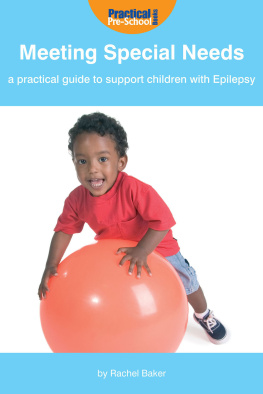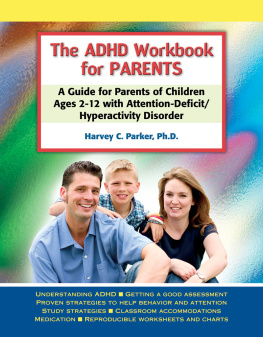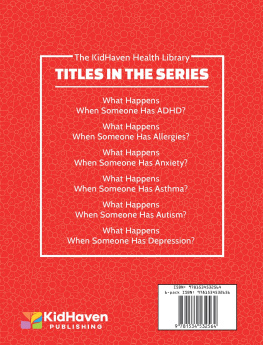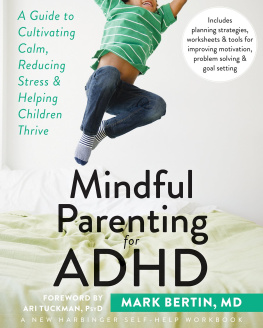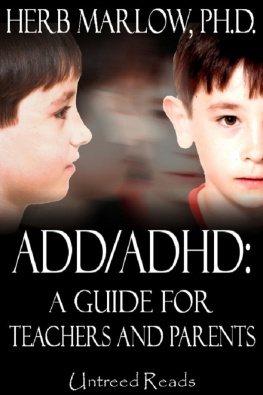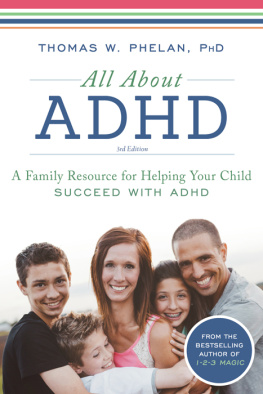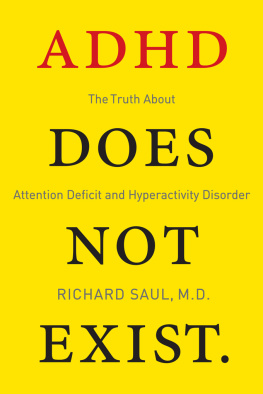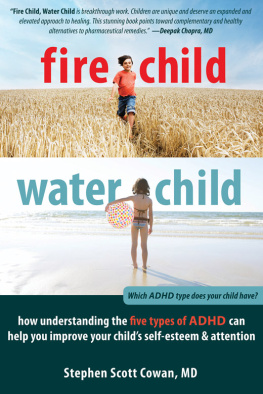Title page
Meeting special needs
A practical guide to support children with Attention Deficit Hyperactivity Disorder (ADHD)
by Selena Ledgerton
Copyright page
Published by Practical Pre-School Books, A Division of MA Education Ltd, St Judes Church, Dulwich Road, Herne Hill, London, SE24 0PB Tel. 020 7738 5454
MA Education Ltd 2007
www.practicalpreschoolbooks.com
2012 digital version by Andrews UK Limited
www.andrewsuk.com
Illustrations by Cathy Hughes. Front cover image iStockphoto.com/Nicole S. Young
All rights reserved. No part of this publication may be reproduced, stored in a retrieval system, or transmitted by any means, electronic, mechanical, photocopied or otherwise, without the prior permission of the publisher.
In this book the use of he, him or his is gender neutral and is intended to include both sexes.
Dedication
Dedicated to my father Harry, mother Phyllis and sister Michelle for all your support.
Introduction
The literature available on Attention Deficit Hyperactivity Disorder is huge and you should read as much as possible if you have children with ADHD in your care or in your class.
This is a practical reference guide that aims to help you in your daily work with a child affected by the condition.
Within this book are included the signs and symptoms of ADHD, information on statementing, problems and issues, rewards and boundaries and ideas to help with behaviour and education plans, together with sections on strategies and techniques. These include some holistic approaches and information on coaching.
Behavioural Characteristics
Most behavioural characteristics are apparent at all times. Some children can have issues with attention or concentration, but may not be impulsive or hyperactive.
Any disorder should be identified early to ensure that a child receives the support he needs to attain his full potential. There are numerous problems when diagnosing ADHD, as there are no physical tests available. ADHD symptoms can be masked by other issues such as dyslexia or speech and hearing problems.
Children with ADHD can display few or many of the following symptoms with varying severity:
Hyperactivity
- restlessness or fidgeting;
- inability to sit still for long periods;
- leaving his seat or standing when sitting is expected;
- excessive talking;
- problems in engaging in activities;
- issues with remaining calm;
- running, climbing or explore when it is inappropriate;
- attempting to leave the group or class;
Impulsive behaviour
- easily distracted;
- speaks or shouts during quiet times;
- shouts out answers in class;
- interrupts;
- has problems taking turns;
- spoils games or activities by interfering;
- when upset, may become violent or aggressive;
- acts first and think later, may disregard the safety of others or self-harm;
Inattention
- prone to losing equipment;
- has difficulty focusing on tasks;
- may be forgetful (especially with a long list of instructions);
- easily distracted;
- lack of attention to detail, careless with work;
- reluctant to complete tasks requiring long-term attention;
- finds it difficult to start tasks which require mental effort and be overwhelmed;
- appears not to be listening.

The Question of Restraint
Some children with ADHD can be violent or aggressive. If this is the case, take a course in child-safe restraint, specifically designed for children of the correct age range. This may sound extreme, but it is in the interest of the child and other children in the class.
The ethos of the training is centred on children and child protection. Restraint holds for children are designed to be nurturing and non-aggressive. Many schemes will advise you on how to approach a violent child, as sometimes he will calm down via discussion and an understanding hand on the shoulder. Sometimes the smallest amount of physical contact can have a positive impact.
The childs case worker can advise you on the Local Education Authoritys (LEAs) policy regarding such training. You will need written permission from the childs parents saying that you may restrain him if he is a threat to himself or others. Do invite the parents to school and show them the various techniques. They should also be present when you discuss restraint with the child. Reasons for restraint should be explained to the child, who should be reassured that you will only hold him if he tries to harm himself or others. Show him the restraint technique that you will use and ensure that he is comfortable. This way, when you need to restrain the child, he will not be frightened. Explain that you will warn him at any time you intend to restrain.
Restraint is a last resort. When you are trained in restraint you will be advised how to document incidents and will be informed that you should never restrain a child without another staff member being present. In this way the incident can be documented and signed by both you and a witness. Remember, documentation is not just a protection scheme for the child, but also for you. The presence of other staff and the use of thorough documentation are important in case of accusations of abuse. It is virtually impossible to harm a child during restraint if you use the techniques as you were taught. The techniques are there to protect the child.
You will also learn protection procedures for other children in the room and yourself. You may need some form of support after an incident and you will definitely need to take a break. The other children in the class will need support and comfort too, as they may be frightened or upset. They should also be given an appropriate explanation so that they do not resent the child with ADHD.
Resentment and fear can be a major problem in the classroom. If the other children do not understand why a child is acting this way, it can lead to him being isolated or bullied. Once the child with ADHD has recovered from the incident, he should return to the class as soon as possible and a normal routine should be resumed.
A guide through the statementing process
Once a child has been diagnosed with ADHD, he can receive additional funding for one-to-one help in school. He may need behaviour support, equipment or academic help, but to gain the extra funding required he must have a statement of special educational needs (SEN).
This can be a difficult task for staff, parents and child as the process can be both confusing and frustrating. The information here will help you support the family and offer information to teaching assistants, or learning support should they need it.
The 1996 Education Act states that the Local Education Authority has a duty to assess a child who may have SEN and the authority must determine the special educational provision which any learning difficulty he may have calls for, (Section 323).
If assessment shows (under Section 323) that it is necessary for the LEA to determine the special educational provision which any learning difficulty he has calls for, the authority shall make and maintain a statement of his SEN (Section 324-1).
In that statement the LEA must give details of the authoritys assessment of the childs SEN and specify the special educational provision to be made for the purpose of meeting those needs (Section 324-2). LEAs have a duty to arrange that the special educational provision specified in the statement is made for the child (Section 324-5).
Once the child is diagnosed (or due to be diagnosed) he can be assessed. Following this assessment, he may receive a statement detailing his special needs and what additional help should be provided. It is then the responsibility of the school and the LEA to organise and fund this help.
Next page
